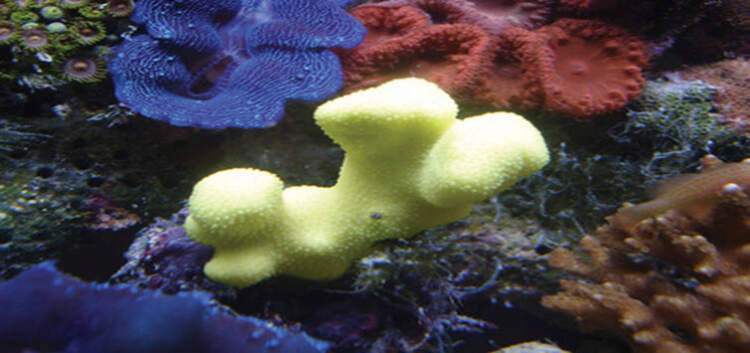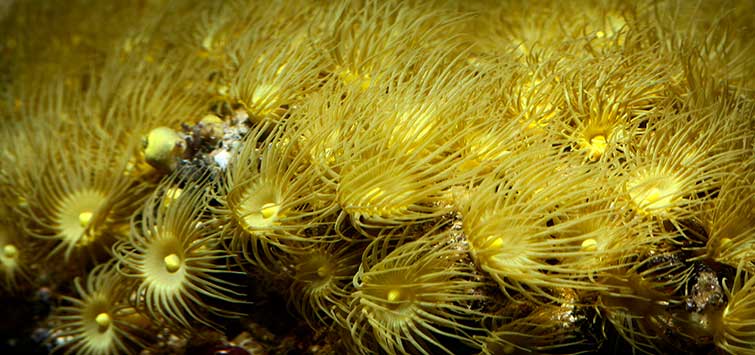Goniopora stokesi
Author: Bob Goemans
Common Names: Flowerpot coral, daisy coral, anemone coral, ball coral
Phylum: Cnidaria
Class: Anthozoa
Order: Scleractinia
Family: Poritidae
Range: Tropical Indo and Western Pacific Ocean, including the Red Sea
Natural Environment: This normally free-living stony coral is usually found in protected lagoons having turbid water conditions.
Water Requirements: Calcium 380 to 430 ppm, alkalinity 3.5 meq/l, pH 8.1 to 8.2, specific gravity 1.024 to 1.026, and a temperature range of 74° to 83°F (23° to 28°C).
Captive Care
This is a commonly imported coral usually available in green or brown colors, but occasionally also available in pink or yellow.
Goniopora is extremely difficult to maintain long-term. There are many thoughts as to its needs, yet very long-term success has eluded all that have tried keeping this species and others in its genus.
Nevertheless, I have maintained different species for slightly more than three years and some aquarists have informed me that they have exceeded that timeframe. Yet long-term success, i.e., beyond three or four years, is still not commonly attainable. Therefore the greatest percentage of those seen in local shops are lost, usually in the first year after purchase.
For those who want to try maintaining this species and are willing to provide a suitable environment, I recommend it being kept in nutrient-rich tanks under subdued lighting, such as with indirect metal halide or moderate fluorescent lighting, with gentle water movement. And even though this coral contains zooxanthellae, it seems to benefit from being fed daily with phytoplankton additives. Its placement should not be on rocks or ledges where the specimen can fall and be injured. The aquarium bottom is the safest placement area.
Also, I suggest no anemonefish be kept in the same tank, as they tend to use its long stemmed polyps as they would be an anemone and would continually stress the coral. This undue stress would soon cause the polyps to cease extending, with the coral's demise soon following.
Even though these corals are readily available and often quite atractive, besides usually being reasonably priced, until we can resolve their nutritional needs this is one of the corals that are probably better left in the wild.
Notes
Goniopora is sometimes misidentified as Alveopora. Goniopora have 24 tentacle tips, whereas Alveopora have 12 tentacle tips.
Never remove a specimen with extended polyps from the water, as the weight of the water in the polyps may damage or tear its flesh. Gently shake the specimen and allow the polyps to mostly retract before removing.

.png?h=595&iar=0&w=2781&hash=5FD5E69473BCC22199FBFA2FB71B6033)



